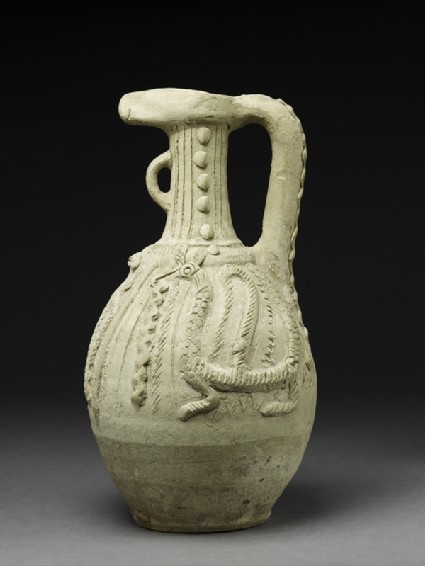Browse: 49 objects
- Reference URL
Actions
Ewer with winged creatures
-
Description
Unglazed wares account for the majority of the ceramics produced in the Islamic world, although they remain largely understudied. The Ashmolean Museum owns several unglazed ceramics, and these help to provide an overview of the range of techniques used to produce and decorate ceramics of this type. This jug has a thrown body and a hand-shaped handle and rim, and is decorated with incised, stamped, and applied motifs including stylized winged creatures.
-
Details
- Associated place
- Date
- 8th - 9th century AD (AD 701 - 900)
- Material and technique
- earthenware, thrown, unglazed, with hand-modelled rim and handle, and incised, stamped, and applied decoration
- Dimensions
-
36 cm (height)
19 cm max. (diameter)
- Material index
- Technique index
- Object type index
- No. of items
- 1
- Credit line
- Gift of Gerald Reitlinger, 1978.
- Accession no.
- EA1978.2240
-
Further reading
Watson, Oliver, Ceramics from Islamic Lands (London: Thames & Hudson, 2004)
Reitlinger, Gerald, ‘Unglazed Relief Pottery from Northern Mesopotamia’, Ars Islamica, 15-16, (1951), p. 22, illus. p. 16 fig. 24
Glossary
earthenware
-
earthenware
Ceramic material made of clay which is fired to a temperature of c.1000-1200⁰c. The resulting ceramic is non-vitreous and varies in colour from dark red to yellow.
Location
Objects are sometimes moved to a different location. Our object location data is usually updated on a monthly basis. Contact the Jameel Study Centre if you are planning to visit the museum to see a particular object on display, or would like to arrange an appointment to see an object in our reserve collections.
Collection trails
Galleries
© 2013 University of Oxford - Ashmolean Museum








